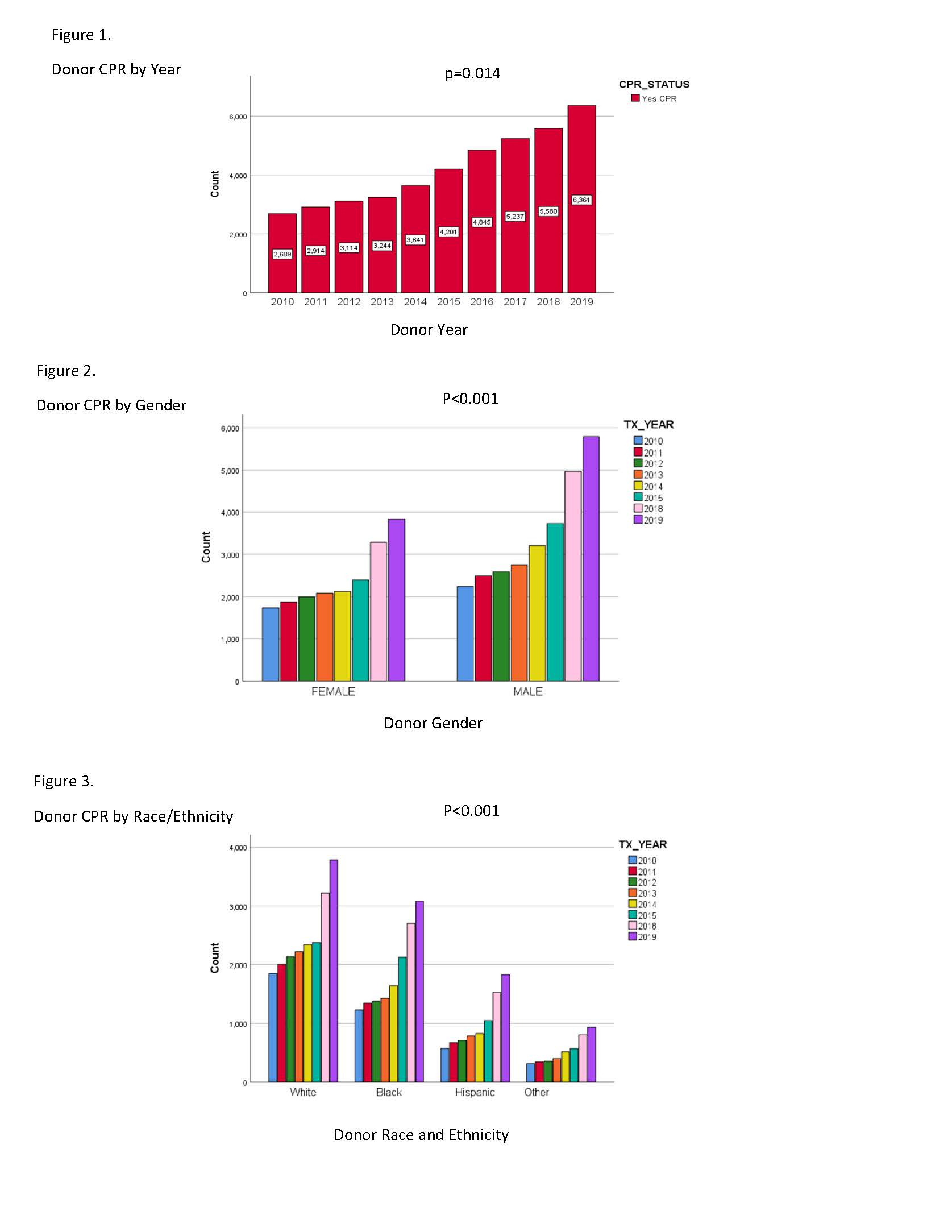Donor CPR and Solid Organ Transplantation
1Morsani College of Medicine, University of South Florida, Tampa, FL, 2Honors College, University of Tampa, Tampa, FL, 3Honors College, University of South Florida, Tampa, FL, 4Transplant Surgery, Tampa General Hospital, Tampa, FL
Meeting: 2021 American Transplant Congress
Abstract number: 1252
Keywords: Cadaveric organs, Donation, Kidney transplantation
Topic: Clinical Science » Organ Inclusive » Deceased Donor Management and Intervention Research
Session Information
Session Name: Deceased Donor Management and Intervention Research
Session Type: Poster Abstract
Session Date & Time: None. Available on demand.
Location: Virtual
*Purpose: In 2010, the American Heart Association and Emergency Cardiac Care (AHA ECC) set a 10-year impact goal of doubling cardiac arrest survival by 2020. The intention of cardiopulmonary resuscitation is always to save the life of a patient; however, some studies suggest donor CPR may improve outcomes in recipient graft survival. The purpose of this study was to determine if the number of organ donors receiving CPR would correlate with the efforts of the AHS ECC impact goal of doubling cardiac arrest survival from 2010 to 2020.
*Methods: We conducted a retrospective study of the CPR status of deceased organ donors from January 2010 to December 2019. Deidentified publicly available data from the United Network for Organ Sharing (UNOS) was utilized for the analysis. Patients were grouped by donation year. A sub-analysis was performed on the recipients of kidneys from donors who received CPR during our study period.
*Results: There were N=90,689 donors in our 10-year study. Figure 1 demonstrates the increase in donors who received CPR from 35% (2,689/7,765) in 2010 to 55% (6,361/11,560) in 2019, (p=0.014) We then analyzed the 47,029 organ donors who received CPR with kidneys utilized for transplantation. Figure 2 demonstrates a 2.4-fold increase in the number of females who received a kidney transplant from a donor who received CPR in 2010 (1,609) vs. 2019 (3798). There was a 2.5-fold increase for male patients who received a kidney transplant from a donor who received CPR in 2010 (2354) vs. 2019 (5,821), p<0.001. In Figure 3 we analyzed the organ donors who received CPR by race/ethnicity and found that the rate of CPR more than doubled in all ethnic groups over the course of the study (p<0.001).
*Conclusions: In conclusion, the number of organs from donors who received CPR more than doubled over the past decade correlating with the goal of the AHA ECC efforts to double the survival of cardiac arrest. Lives were saved because more people received successful CPR and lives were saved because more organs were transplanted from donors who received CPR for males and females and across all ethnic groups.
To cite this abstract in AMA style:
Larsen E, Cardoza K, Robichaux K, Kumar A, Bowers V, Buggs J. Donor CPR and Solid Organ Transplantation [abstract]. Am J Transplant. 2021; 21 (suppl 3). https://atcmeetingabstracts.com/abstract/donor-cpr-and-solid-organ-transplantation/. Accessed December 18, 2025.« Back to 2021 American Transplant Congress

